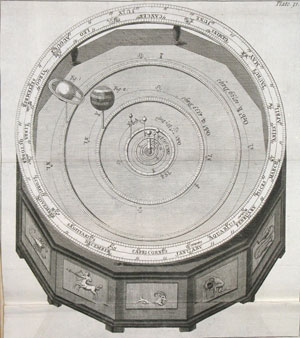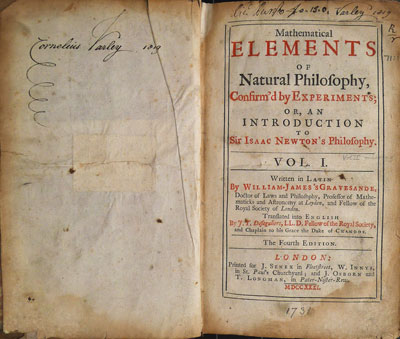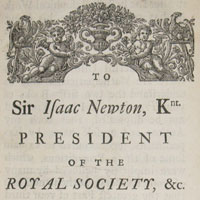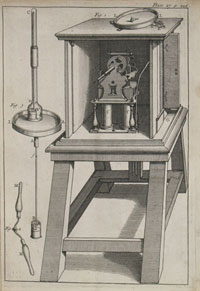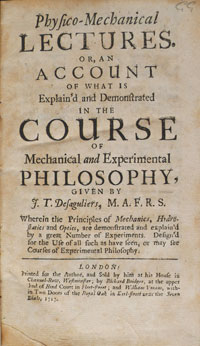John Theophilus Desaguliers (1683–1744): popularising Newton
John Theophilus Desaguliers, Huguenot émigré, priest, freemason, engineer and natural philosopher, was both a protégé and promoter of Newton. An Oxford graduate and popular lecturer, he became Newton's experimental assistant in 1713, and a fellow of the Royal Society in 1714.
Desaguliers promoted Newtonianism in various settings, and for various ends. Within the Royal Society, he devised new experiments to defend several of Newton's claims (for instance, concerning the shape of the earth) against French critics. His skill as an experimental demonstrator also helped establish him within the competitive world of commercial lecturing. His popular lectures, intended to demonstrate Newtonian propositions to a non-academic audience, provided the basis of several publications. Desaguliers' natural philosophical credentials were also useful in obtaining patronage: he performed experiments for the royal family, and his allegorical poem, The Newtonian System (1728), compared the certainty and stability of Newton's universe with that of the Hanoverian monarchy.
John Theophilus Desaguliers (1683–1744)
Mathematical elements of natural philosophy confirm'd by experiments; or, an introduction to Sir Isaac Newton's philosophy, Vol. I. Written in Latin by William-James 's Gravesande [...] Translated into English by J.T. Desaguliers [...] 4th edition (London : Printed for J. Senex .., W. Innys .. and J. Osborn and T. Longman, 1731) STORE 71:11
Willem Jacob 's Gravesande, professor of physics and astronomy at Leiden University, published his Physices elementa mathematica experimentis confirmata in Leiden in 1720. This beginners' guide to Newtonianism aimed to illustrate (rather than prove) Newton's propositions through the use of experiments, including many devised by 's Gravesande himself. The book's popular appeal made an English translation attractive to publishers. Desaguliers' Mathematical Elements, a two-volume edition lavishly illustrated with engravings of 's Gravesande's experimental apparatus, appeared later in the same year: produced in haste in order to beat a rival translation to the press. The resulting errors were corrected by Desaguliers for the fourth edition.
This volume was previously owned by Cornelius Varley (1781–1873), watercolour painter and instrument maker. Varley invented the 'graphic telescope', an optical aid for artists, now displayed in the Whipple Museum.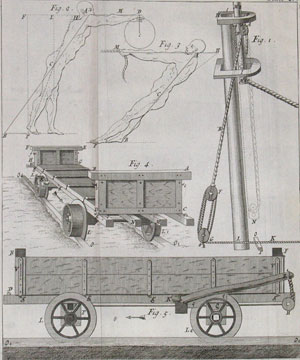
John Theophilus Desaguliers (1683–1744)
Physico-mechanical lectures, or, An account of what is explain'd and demonstrated in the course of mechanical and experimental philosophy. (London : Printed for the author, and sold by him at his house ..; by Richard Bridger ... and William Vream ..., 1717) STORE 81:11.
This slim, promotional volume provides an early précis of Desaguliers' popular lectures, published 'for the Use of such Gentlemen as have been my Auditors [...] to save the trouble of Writing them over for every person.' Desaguliers took advantage of his audience's interest by printing the lectures and selling them from his house in Westminster, where his courses on experimental philosophy were delivered. In the preface, he promised to provide a more complete version of the lectures, including over 60 copper plates and written for the benefit of readers 'altogether unskill'd in Mathematics'. The first volume of the resulting Course of experimental philosophy, complete with fine engravings of apparatus and experiments, was published in 1734.

